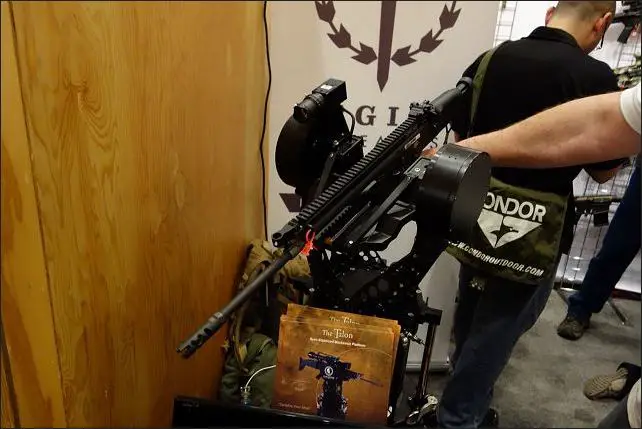Russian Special Operations Forces & Federal Security Service will receive gyro-stabilized mounts 10503173
|
|
|||
|
Military Defense Industry Technology - Gyro-stabilized mounts
|
|||
|
|
|||
| Russian Special Operations Forces & Federal Security Service will receive gyro-stabilized mounts. | |||
|
The Russian Defense Ministry’s Special Operations Forces and the special outfit of the Federal Security Service (FSB) will be issued super-lightweight gyro-stabilized mounts for attaching sniper rifles and machineguns to light armored vehicles, high-speed buggies, boats and helicopters, according to the Izvestia daily.
|
|||
|
|
|||
 Paradigm SRP Talon Gyro-Stabilized Marksman Platform/Universal Weapons Mount (GSMP/UWM) (Photo Defense Review) |
|||
|
|
|||
|
The advanced system co-developed by the 5.45 Design and INS Stabilizatsiya companies dampens the oscillations and vibrations completely by means of miniature gyroscopic stabilizers, thus creating conditions for pinpoint fire despite bumpy ride.
The mount consists of a base and a gyro stabilization unit. The sniper rifle is attached to the latter by means of Picatinny rails. The mount will accommodate machineguns from 5.45 mm to 12.7 mm in caliber after it has been modified accordingly. The device is wrapped around super-miniature gyros marginally larger than those equipping smartphones. "We have started the factory tests," Sergei Goncharov, director general of AllMulticam that owns the 5.45 Design brand-name, told the Izvestia daily. "We shall submit a complete device for field testing soon. The mount operates like clockwork in the lab, and we need to make sure it does the same when real guns [mounted on it] fire. Our job is to enable both sniper rifles and machineguns to fire on the move accurately. Once this has been achieved, we shall deliver the mount to the Special Operations Forces and FSB." According to Goncharov, gyro stabilization is a feature of the mount, setting it apart from the current pintle mounts equipping vehicles, boats and helicopters. The gyro-stabilized mount dampens the engine’s vibration and disregards the bumps on the ground, enabling the gunner to take aim. The mount easily traverses 360 deg. and allows the angle of elevation from -70 deg. to 30 deg. "The peculiarity of our product lies in its mobility," INS Stabilizatsiya’s leader, Nikolai Verbitsky, said, "i.e. if necessary, the gunner will be able to not only dismount his weapon quickly but also shift the mount to another vehicle. The mount weighs 28 kg." Mobility is the feature of the new development making it different from similar devices from such heavyweights as the Kalashnikov Corporation or Degtyaryov Plant, Russia’s majors in fighting module development. However, their modules are designed for use as part of combat vehicles only. They weigh 200-300 kg and make no provision for the crew having to abandon their vehicle and haul the weapon with them. "The recent exercise of our Airborne Force personnel and Egyptian special operators are a good case in point as far as the present-day weapon mobility standards are concerned," Vadim Kozyulin, a professor with the Academy of Military Sciences, said. "During the exercise, our Paras were going on quadbikes in the desert and their Egyptian counterparts in light pickups. At one time, they had to dismount and continue on foot. Our lads proceeded, having taken their machineguns along, while the Egyptians abandoned theirs on their cars, because theirs could not be dismounted on tap." According to the expert, gyro-stabilized mounts have been made in Germany and the United States alone to date. "The main operating principle of the Special Operations Forces and FSB’s special operators is ‘one shot - one kill’. Hence, the accuracy of fire must be absolute irrespective of the troopers’ modus operandi - riding vehicles, flying helicopters or assaulting buildings," Kozyulin stressed in his interview with the Izvestia daily. |
|||




























